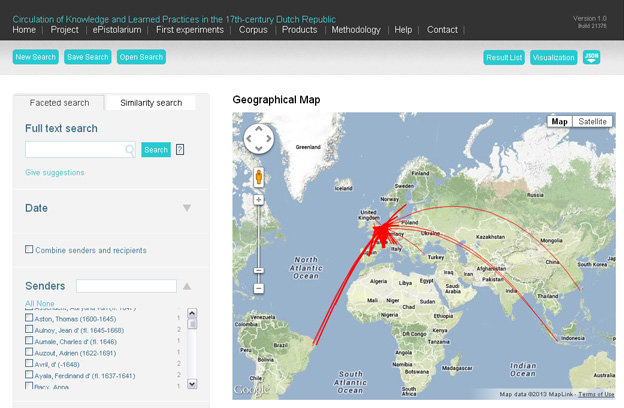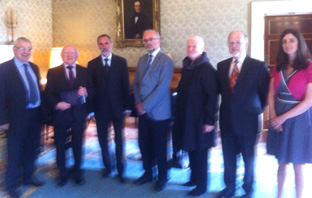Our great friends and colleagues at Circulation of Knowledge and Learned Practices in the Seventeenth-Century Dutch Republic (CKCC), based at Huygens ING, have just launched their virtual research environment for Dutch scientific correspondences, the wonderful ePistolarium. This major new resource contains metadata on and full texts of around 20,000 letters sent to and from nine seventeenth-century scholars (including René Descartes, Constantijn and Christiaan Huygens, and Antoni van Leeuwenhoek), and is equipped with faceted search, a neat visualization suite (results can be displayed on timelines, maps, and as both correspondent and co-citation network diagrams), as well as some bleeding edge techniques in corpus linguistics such as named entity recognition and topic modelling. Check it out!
The ePistolarium was launched in the magnificent Gertrudiskapel in Utrecht on 13 June 2013, and, alongside presentations from its creators (and a terrific video), our very own Howard Hotson was on hand to celebrate this new tool and to consider its relationship to Early Modern Letters Online as well as its significance to scholarship on correspondences more broadly (a video of his talk, entitled ‘The ePistolarium and the Digital Republic of Letters: The Circulation of Knowledge and Learned Practices in the Twenty-First Century’, is above). Indeed, these are exciting times for the Digital Republic of Letters in general and the relationship between our two initiatives in particular; we’re going to share metadata, are co-applicants with other interested parties on major funding proposals to COST and Digging into Data, and will be sharing the stage at several forthcoming events, most imminently (with Antony McKenna) at our panel on ‘Electrifying the Republic of Letters’ at Intellectual Networks in the Long Seventeenth Century at Durham next week. Congratulations to Charles, Guido, Walter, Wijnand, and the rest of the CKCC team!







